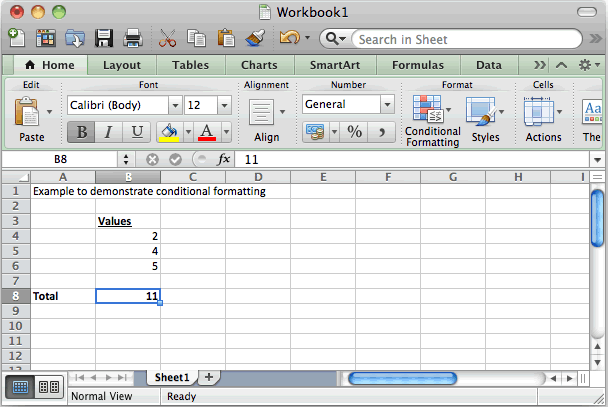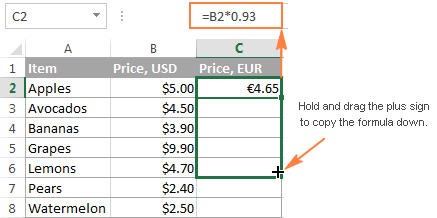

#Excel for mac sums staying on cell free#
Get our FREE VBA eBook of the 30 most useful Excel VBA macros.Īutomate Excel so that you can save time and stop doing the jobs a trained monkey could do.īy entering your email address you agree to receive emails from Excel Off The Grid. Therefore, even though we cannot see them, hidden sheets are also included in the result.

All the tabs from Jan to Dec are included in the calculation. With this beautiful little formula, we can see all the worksheets included in the calculation just by looking at the tabs at the bottom. Replace A1 with the cell reference you wish to use.If not, the single quotes can be left out. If your worksheet names contain spaces, or are the name of a range (e.g., Q1 could be the name of a sheet or a cell reference ), then single quotes ( ‘ ) are required around the sheet names. Replace FirstSheet and LastSheet with the worksheet names you wish to sum between.

To sum the same cell across multiple sheets of a workbook, we can use the following formula structure: =SUM('FirstSheet:LastSheet'!A1) That’s why I’m sharing it here by using this approach, you can look like an Excel genius to your work colleagues too 🙂 SUM across multiple sheets – basic I still remember the first time a work colleague showed me this trick my jaw hit the ground in amazement.

The good news is that there is another approach we can take that will enable us to sum across different sheets easily. And just think about the time you will waste if there is a new tab to be added. The chances are that you don’t need to do all that clicking. How do you know if you’ve clicked on every worksheet? What if you happened to miss one by accident? There is only one way to know – you’ve got to check it! The formula in cell C5 is: =Jan!C5+Feb!C5+Mar!C5+Apr!C5+May!C5+Jun!C5+ The screenshot below shows an example of this type of approach. Also, if the sheet names are long, the formula starts to look quite unreadable. If there are a lot of worksheets, it takes a while to click on them all. I see many examples where the user has clicked the same cell on each sheet, putting a “+” symbol between each reference. For example, it could be a monthly report with a tab for each month (see screenshot below as an example). Have you ever had to sum the same cell across multiple sheets? This often occurs where information is held in numerous sheets in a consistent format.


 0 kommentar(er)
0 kommentar(er)
